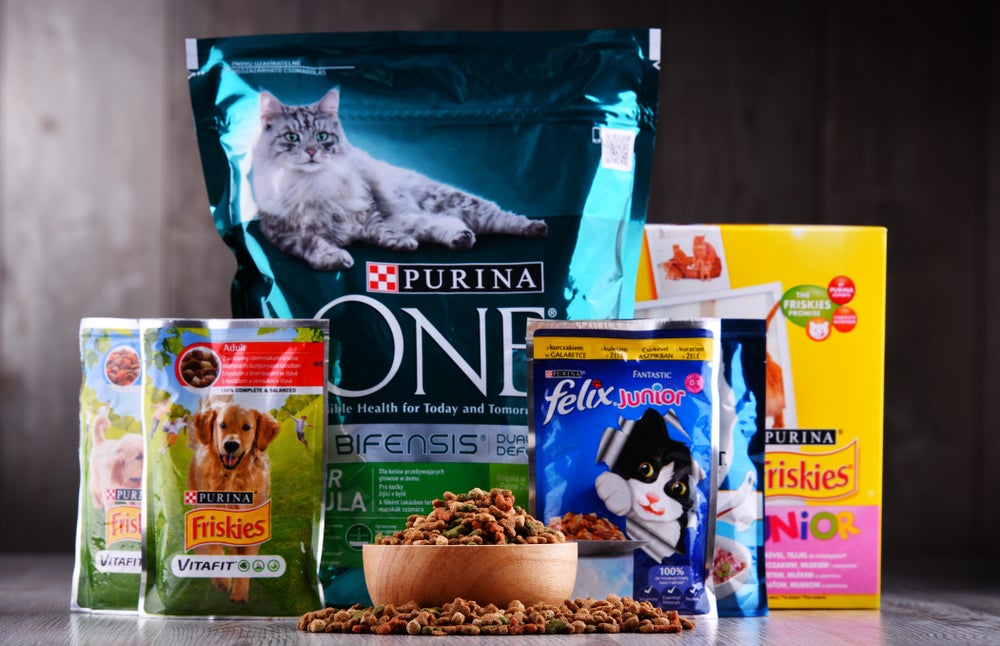 Foodex Japan, the Asia and Pacific Rim region’s largest food and beverage show, enjoyed continued success this year, with its overall theme of food traceability. With visitors and exhibitors from all over the world, the show gave companies an opportunity to showcase new and existing products, many of which were sampled by our man at the show, Bruce Hoggard.
Foodex Japan, the Asia and Pacific Rim region’s largest food and beverage show, enjoyed continued success this year, with its overall theme of food traceability. With visitors and exhibitors from all over the world, the show gave companies an opportunity to showcase new and existing products, many of which were sampled by our man at the show, Bruce Hoggard.
Celebrating its 30th anniversary, Foodex Japan 2005, the number one food and beverage event in the Asia and Pacific Rim region, was held over four days in March. On a global scale, it is the third-largest food and beverage show in the world, after SIAL in Paris and ANUGA in Cologne.
This year’s overall seminar theme and show focus dealt with food traceability. This is an important issue, whether for organic or conventional foods, as people worldwide take more interest in where and how their food is grown and prepared. However, because the seminar was directed at Japanese visitors, it was delivered in Japanese, making it difficult for any foreigners hoping to capture some insight into the topic.
Hosted in eight halls of the Makuhari Messe (Nippon Convention Center) the show floor space remained divided into two main sections. The larger of the two areas, the International Exhibition Zone, had 1,598 international exhibitors. However, this was a 7% decrease from 2004. Meanwhile, Japanese companies also experienced a decrease of 11%, registering only 664 exhibitors. The lower number of exhibitors was matched by a drop in attendees falling from 105,487 people in 2004 to close to 92,500 this year. The decreased number of people was most noticeable on the Thursday, usually the busiest day of the show and Friday where exhibitors were preparing to leave the show prior to its completion.
The Japanese Exhibition Zone, with a unique gathering of Japanese foods and food items, filled halls six to eight, although not to the same extent as it had in 2004. This year there were more exhibitors targeting the foodservice and institutional industries. Also, the increased focus on diets and traceability was translated into more consumer interest in the ingredients being used in food production. Therefore, products containing unique ingredients and created using special manufacturing processes were popular and drew crowds. This was especially the case for salt and vinegar as well as finished products such as pickles and jam. It is in fact amazing how much salt is being seen at the last few shows during the past six months. Other interesting exhibits included snack foods and sweets containing ingredients claiming to be kind to a person’s body and their health.
The “best part of any food show”
How well do you really know your competitors?
Access the most comprehensive Company Profiles on the market, powered by GlobalData. Save hours of research. Gain competitive edge.

Thank you!
Your download email will arrive shortly
Not ready to buy yet? Download a free sample
We are confident about the unique quality of our Company Profiles. However, we want you to make the most beneficial decision for your business, so we offer a free sample that you can download by submitting the below form
By GlobalDataThe International Exhibition Zone, comprised of halls one to five, still accounted for 60% of the total number of exhibitors and provided an array of exciting products from throughout the world. Although Europe was well represented, FoodEx still has the greatest Asian representation of any trade show anywhere in the world.
The Singaporean Group Stands’ theme was ‘Tasty Singapore’ and more than 20 companies offered interesting and varied dishes for sampling, the best part of any food show. Mainland China also had a greater number of exhibitors this year. However, the unexpected outcome of this increase was many of the companies had moved up the value-added chain offering more processed foods and consumer ready prepared foods.
Although the international numbers declined there was a larger participation from South American countries such as Argentina, Peru and Colombia. This increased involvement was, in part, a result of the pending lift of the import ban covering many commodities and products from these countries, especially Brazil.
In addition to the booths the “International Food Hall 2005”, a well-known on-site programme offering visitors a series of special events and seminars, continued to be popular. More than 20 presentations from numerous countries including Sri Lanka, Spain, Peru and the United States provided a wealth of information, experience, knowledge and some great sampling of cheeses, wines and other products.
Plaza format retains success
As in the past years the show had several focus areas, called Plazas, where similar products were grouped together to create “mini-shows” and an industry concentration.
The show’s four focus areas or “Plazas” were once again popular as companies of similar product types were located together to provide a visible presence and critical mass for show visitors. The areas included Foodex Deli, where this year’s emphasis was on finished products that were tasteful when served hot or cold, and quick-cook meals. The other Plaza generating renewed interest and a combination of two previous Plazas was the Foodex Health, Organic & Natural Plaza. This area featured more than 30 companies with a combined total of 75 booths. These companies were promoting foodstuffs for specific health use and/or nutrient function, supplements, nutritionally fortified health-oriented products, natural foods, and products approved as JAS certified organic food. This area continues to grow as more Japanese people begin to appreciate and purchase organic and health foods.
Always popular in Asia the Foodex Tea & Coffee Plaza provided a comprehensive selection of green tea, blended tea and coffee beans as well as many related products such as sweeteners and flavours.
The newest Plaza this year was Food From Japan. This was extremely popular with the Japanese and numerous curious foreigners, and promoted the exciting chance to discover domestic regional foods and beverages yet to be marketed internationally.
Minato Seika was one of these companies at the show with its unique product lines including bamboo grass in various configurations and fillings. This is a food item requiring cultural preparation as well as acquiring a taste for the product.
The more likely food success will be a type of Japanese dessert. The flavours are as varied and intriguing as the sweet pastry itself. Several of the more interesting flavours were walnut, pumpkin, sweet potato, green soybean, coffee, black tea and cream.
This area was a pleasent change from the regular Japanese booths that were no more than trading companies displaying their array of imported products.
Relief for the sweet tooth
With the large contingent of Singapore companies at the show it was easy to spend time sampling the various foods, both common and unique. Baker’s Oven Pattisieries offers several product lines including frozen dough for commercial application, mini-pastries and birthday cakes. The mini-pastries, in various forms and with various types and flavorings of fillings, are an excellent snack for entertaining or in lunches at school or work. Just like the advertising for a particular potato chip, these mini pastries were so good one may not be enough.
Baker’s range of birthday cakes also provided wonderful relief for the “sweet tooth” and included the common favourites; American Cheesecake, Blackforest Cake and one meant specifically for the Southeast Asian region, the fresh Durian Cake. For many Europeans and North Americans the smell, and therefore the taste, of the Durian fruit is to strong and pungent for them to enjoy what most Southeast Asians consider to be a delicacy. In fact, it is fun to watch the expression and reactions of unsuspecting foreigners trying Durian for the first time. They tend to shrivel up their nose to the smell and are unable to actually place the fruit in their mouth.
Also based in Singapore, the company My Mum’s Cuisine offers the experience and taste “like mum used to make” in several product lines. In fact, the company and its products originated as a restaurant that opened in Singapore in 1995. The success of the restaurant and the company’s range of products are partially due to utilising family recipes and know-how. These products include premium Asian sauces and a line of desserts appealing more to the Asian palate.
Satay sauce and white asparagus
In the Traditional Asian Spice & Sauces line of products the company offers six different sauces, each with their own specific and definite flavour. Anyone who has had the good fortune to taste Indonesian or Malay Satay will attest to the wonderful flavour it adds to any meat. Satay is a classic Malay dish where pieces of meat are placed on wooded skewers and grilled over charcoal or wood. The most popular flavour is the sweet peanut sauce, wonderfully captured by My Mum’s version of this classic Southeast Asian dish. Satay can also take on a spicy role as well, depending on personal taste.
Mum’s offers another type of spicy sauce originating in the Sichuan province of southern China. My Mum’s Sichuan Sauce combines the power and impact of spicy hot with the comforting and soothing effects of sweetness. It adds a special zest to any stir-fry, whether it is meat or seafood, or it can also be used on fried rice and eggs prepared in any style. Other sauce varieties from My Mum’s includes a Sweet & Sour Sauce, a Curry Sauce and a Sambal Chili Sauce made from red chili, onion and shrimp. Each has its own distinct flavour and can bring normal everyday meals to life, just have the “water” close at hand.
On the dessert side, My Mum’s Pulot Hitam is definitely a dish where acquiring the taste is a requirement. This is based on both the colour and the texture of the product, unless of course rice pudding is already a favourite. Created by ethnic Malays living in Singapore, the name Pulot Hitam literally translates to mean “rice that is black”. This dessert is made from black glutinous rice and coconut milk and has a porridge texture and look to it.
A Polish company from Wolsztyn, approximately 200 kilometres east of Berlin, was at the show promoting its various vegetables, including mushrooms and white asparagus. With April fast approaching many Germans and other Europeans will be preparing to feast on white asparagus. The season continues until sometime in mid June (24th in Germany) and is very much a European tradition and meal unlike North America where it is predominately green asparagus. Mushrooms are a very popular food item in Japan, yet it was unclear as to the immediate reaction to the white asparagus.
New noodle flavours
Portionables, Inc., was demonstrating its individual serving sizes and packaging for the commercial sector, including hospitals and restaurants. It is amazing how “hospital” food has progressed over the years, acquiring some taste and variety. In this case, any person who enjoys soup and in particular, New England Style Clam Chowder, would enjoy Portionables offering. With a creamy milk base, the soup is filled with sea clams and potatoes, all adding to the smooth and delicious taste.
Not all food companies start out as food companies. Instead, some evolve to become companies with large food holdings and concerns. Lio Ho Group, founded in Taiwan in 1948, is such a company. It originally started as Lio Ho Cotton Weaving Mill and through continuous expansion during the last 57 years the company added Lio Ho Food Co., Ltd, in 1999.
The company manufactures such popular and convenient food products as instant noodles and peanuts in Central and Northern China. This is just one more example of the growing economic integration between Taiwan and Mainland China. The instant noodles, one of the most popular and favourite food items throughout Asia, are offered in six various noodle product lines including the “Spring 100”, “Slurppy” and “Lazy Noodles”.
The Spring 100 product line includes stew beef, onion pork and seafood flavours while the newer flavours in this style of noodles include spicy beef and snow vegetables with shredded pork. The spicy beef definitely provides a taste “kick” ensuring the consumer is aware of the spice while the onion soup is weaker than most “French Onion soups eaten in either Europe or North America.
Party atmosphere
Lio Ho also had various peanut flavours and types on display and for tasting. The less common flavour, although it was claimed to be popular, was peanuts coated with curry and packaged in either vacuum seal plastic pouches or jars. The curry flavour for a peanut was definitely a taste a person needed to become accustomed to but does get better each time the peanuts are eaten.
Based in Mainland China, the Shanghai Pudong New Area Chic International Trading Company was also at the show. Its popular product was the bite-size Fruitastic mini-fruit cups. Although not a new product, these four-ounce, single serving, bite-sized snack foods provide an easy and enjoyable way for children, and adults, to obtain their daily supply of vitamin C. The choice of fruit flavours, combining juice and fruit pieces, range from Mandarin Oranges and Oriental Golden Grapefruit to Yellow or Snow Peach.
Even though the number of exhibitors and visitors each dropped by approximately 10%, it did not seem to reduce the positive atmosphere permeating each day of the show. Also many exhibitors commented on the quality of the visitors who did stop by their booths. However, by Friday afternoon several of the exhibitors were slightly disillusioned by the smaller crowds on the Thursday and Friday. Again this could be attributed to the fact many of these companies still exhibit without a Japanese-speaking individual in the booth. This is the quickest way to ensure you do not succeed in the Japanese market.
As the show organisers look forward to the 31st show, to be held from 14 to 17 March 2006, they are hoping this year’s decrease is only a small blip on the radar screen and the numbers will rebound in 2006. Given the resurgence of the Japanese economy and the growing interest and acceptance of foreign foods, they may see their wish come true as good food and a party atmosphere always attracts a crowd.







